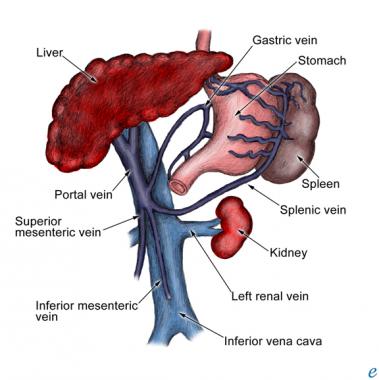Portal Hypertension
Budd-Chiari syndrome (BCS) is a disorder affecting the liver and blood vessels, where blood flowing into the liver has difficulty in being able to flow out, leading to serious complications. After the blood has passed through the liver, it flows out through the hepatic veins and into the inferior vena cava, a large blood vessel that carries blood back to the heart. In BCS, this flow is partially blocked, sometimes referred to as ‘an obstruction of hepatic venous outflow’.
Treatment
The aim of treatment for BCS / Portal Hypertension is to keep your liver function stable by maintaining the flow of blood out of the liver. Doctors will be looking to:
1) Re-channel the blocked veins if possible
2) Prevent recurrence or progression of thrombosis
3) Ease or ‘decompress’ the congestion of blood in your liver
4) Manage your ascites
5) Prevent further damage to your liver and allow liver cells to regenerate

Portal Hypertension :
Portal hypertension is an increase in the blood pressure within a system of veins called the portal venous system. Veins coming from the stomach, intestine, spleen, and pancreas merge into the portal vein, which then branches into smaller vessels and travels through the liver.
Hepatic Vein Stenting :
In medicine, a stent is a tube or other device placed in the body to create a passage between two hollow spaces, and stenting is the placement of a stent. There is a wide variety of stents used for different purposes, from expandable coronary, vascular, and biliary stents, to simple plastic stents used to allow the flow of urine between kidney and bladder. The stent is also used as a verb to describe the placement of such a device, particularly when a disease such as atherosclerosis has pathologically narrowed a structure such as an artery.
TIPSS :
Transjugular intrahepatic portosystemic shunt or transjugular intrahepatic portosystemic stent shunting (commonly abbreviated as TIPS or TIPSS) is an artificial channel within the liver that establishes communication between the inflow portal vein and the outflow hepatic vein. It is used to treat portal hypertension (which is often due to liver cirrhosis) which frequently leads to intestinal bleeding, life-threatening esophageal bleeding (esophageal varices), and the buildup of fluid within the abdomen (ascites). An interventional radiologist creates the shunt using an image-guided endovascular (via the blood vessels) approach, with the jugular vein as the usual entry site.
